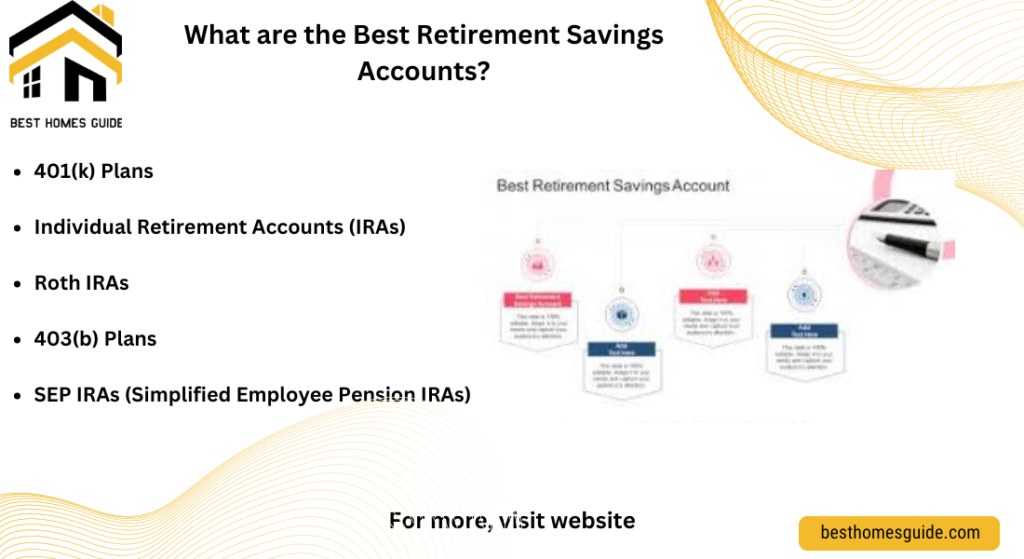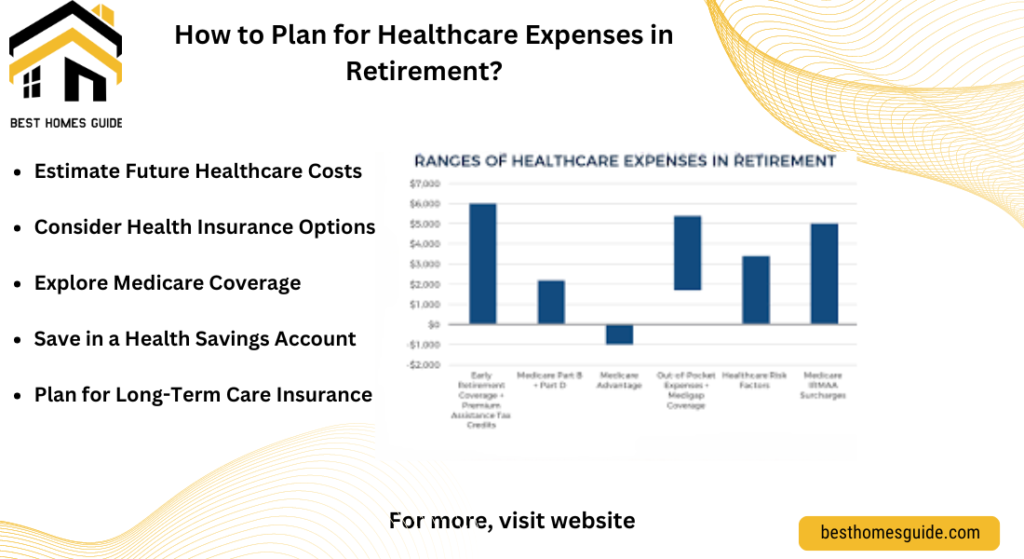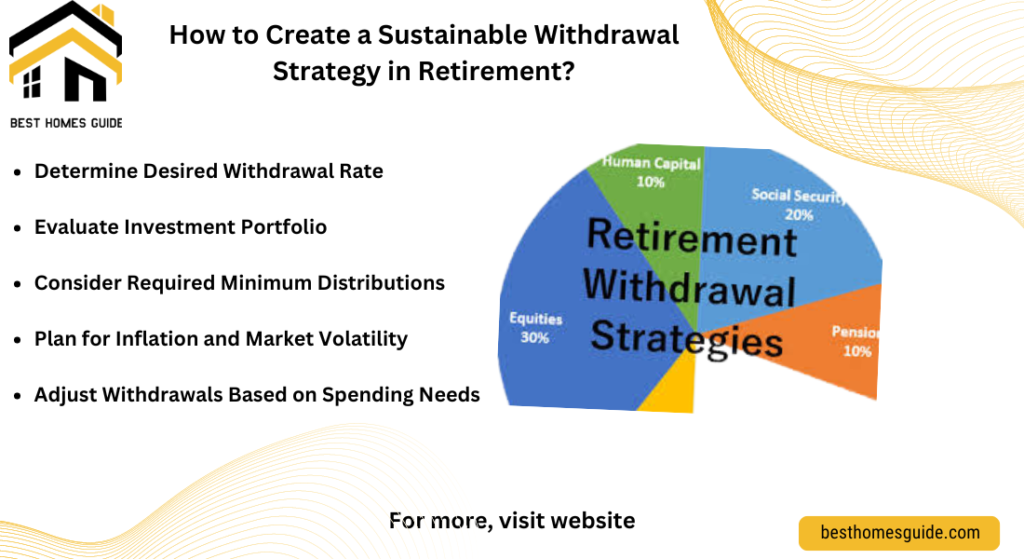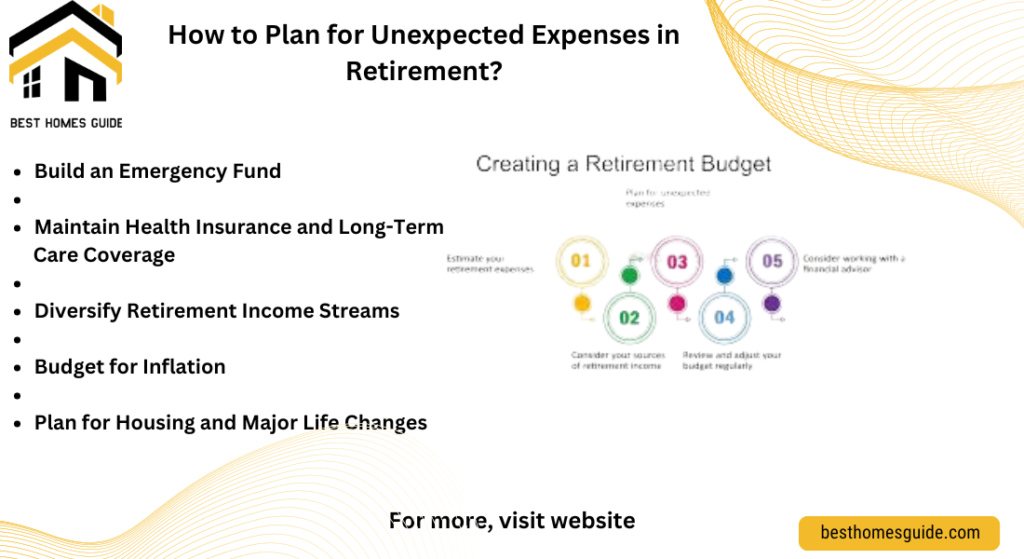Retirement planning is the strategic process of defining your retirement goals and the financial and lifestyle choices necessary to achieve them. It involves estimating future expenses, income sources, and financial needs to ensure a comfortable and secure retirement. This plan should adapt over time, reflecting changes in personal circumstances, economic conditions, and lifestyle aspirations.
Why is Retirement Planning Important?
Retirement planning is crucial for several reasons. First, it provides financial security, making sure you have the necessary funds to support your desired lifestyle after you stop working. With life expectancies rising, planning is essential to avoid outliving your savings. Effective retirement planning helps manage healthcare costs, which often increase with age. Proper planning also offers tax benefits, reducing your tax burden through strategic investments in tax-advantaged accounts like IRAs and 401(k).
How Early Should You Start Planning for Retirement?
The best time to start planning for retirement is as early as possible. Beginning early allows you to take advantage of compound interest, where the interest earned on your savings also earns interest over time. This significantly increases your retirement fund compared to starting later in life. Early planning also means you can contribute smaller amounts regularly, reducing the financial strain of having to save large sums closer to retirement age.
Retirement planning is not a one-time activity but an ongoing process that should evolve your career and personal life progress. In the early stages of your career, you might focus on accumulating savings and taking higher investment risks. You approach retirement, your strategy should shift towards preserving capital and ensuring a steady income stream to support your retirement lifestyle.
What are the Essential Steps in Retirement Planning?
Setting Clear Goals
The first step in retirement planning is setting clear, specific goals. Determine the age you wish to retire, the lifestyle you want to maintain, and the financial requirements to support that lifestyle. It is also essential to consider potential healthcare costs and other significant expenses like travel or supporting family members.
Choosing the Right Accounts and Investments
Selecting the appropriate retirement accounts is vital. Options include employer-sponsored plans like 401(k)s and 403(b)s, as well as individual accounts like IRAs. Each account type offers different tax advantages and investment opportunities. Diversifying your investments within these accounts can help balance risks and returns, ensuring your savings grow while protecting against market volatility.
Regularly Reviewing and Adjusting Your Plan
Retirement planning requires regular review and adjustment. Life events, marriage, having children, or significant career changes can impact your financial situation and retirement goals. Periodically revisiting your retirement plan helps ensure it remains aligned with your current circumstances and long-term objectives

What Factors Influence Your Retirement Savings Needs?
Income and Expenses
The amount you need to save for retirement depends significantly on your expected income and expenses. Your pre-retirement income serves as a baseline for estimating your future financial needs. And financial experts suggest aiming to replace about 70-80% of your pre-retirement income to maintain a comfortable lifestyle. It is crucial to consider all potential expenses, including housing, healthcare, daily living costs, and leisure activities. Planning for unexpected expenses and inflation is also vital, these factors can erode your purchasing power over time.
Healthcare Costs
Healthcare is the largest expense in retirement and tends to rise faster than general inflation. You age, the likelihood of requiring more medical care increases, making it essential to plan for these costs. This includes regular medical expenses, long-term care, and potential medical emergencies. Incorporating health savings accounts (HSAs) or long-term care insurance into your retirement plan can help mitigate these costs.
Longevity and Lifestyle Choices
Your life expectancy and desired retirement lifestyle significantly influence your savings needs. Longer life expectancies mean your savings need to last longer, potentially 20-30 years or more. Your lifestyle choices, Including travel, hobbies, and relocation plans, also affect how much you need to save. For example, extensive travel or moving to a higher cost-of-living area will require a larger retirement fund compared to a more modest lifestyle.
How Much Money Do You Need to Retire Comfortably?
Calculating Your Retirement Savings Goal
Determining how much money you need to retire comfortably involves several steps. First, estimate your annual expenses in retirement, including housing, healthcare, food, and entertainment. Then, calculate how much you need to save to generate enough income to cover these expenses. Many financial advisors recommend the 4% rule, which suggests that withdrawing 4% of your retirement savings annually can help ensure your funds last throughout your retirement. This rule should be adjusted based on your individual circumstances and current economic conditions.
Considering Income Sources
Your retirement income will likely come from multiple sources, including Social Security, pensions, and personal savings in accounts like 401(k)s and IRAs. It’s important to understand how much you can expect from each source and how to optimize these funds. For example, delaying Social Security benefits can increase your monthly payout, while choosing the right investment strategy can maximize your retirement savings growth.
Adjusting for Inflation and Taxes
Inflation can significantly impact your retirement savings, reducing your purchasing power over time. To counteract this, consider investing in assets that offer inflation-beating returns, stocks or inflation-protected securities. Tax planning is essential to minimize the amount of your retirement income that goes to taxes. Utilizing tax-advantaged accounts like Roth IRAs, which offer tax-free withdrawals, can help manage your tax burden in retirement.
What are the Best Retirement Savings Accounts?
Employer-Sponsored Plans: 401(k) and 403(b)
Employer-sponsored plans, like 401(k)s and 403(b)s, are among the best options for retirement savings. These plans allow you to contribute a portion of your pre-tax income, reducing your taxable income and allowing your investments to grow tax-deferred. Many employers also offer matching contributions, which can significantly boost your savings. It’s important to take full advantage of employer matches this is essentially “free money” for your retirement
Individual Retirement Accounts (IRAs)
Individual Retirement Accounts (IRAs) are another excellent option, offering both traditional and Roth versions. Traditional IRAs provide tax-deferred growth, with contributions potentially being tax-deductible. Roth IRAs, on the other hand, offer tax-free growth and tax-free withdrawals in retirement, provided certain conditions are met. These accounts are particularly beneficial if you expect to be in a higher tax bracket in the future, they can help manage your tax liability effectively
Health Savings Accounts (HSAs)
Health Savings Accounts (HSAs) are unique in that they offer triple tax advantages: contributions are tax-deductible, the account grows tax-free, and withdrawals for qualified medical expenses are also tax-free. HSAs can be a powerful tool for retirement planning, especially to cover healthcare costs, which are a major expense in retirement. You turn 65, you can use HSA funds for non-medical expenses without a penalty, although such withdrawals will be subject to income tax

How to Choose Between a 401(k), IRA, and Other Accounts?
Comparing Contribution Limits and Tax Benefits
When choosing between a 401(k) and an IRA, the most significant difference is the contribution limits. For 2024, you can contribute up to $23,000 to a 401(k) if you’re under 50, and $30,500 if you’re 50 or older. In contrast, IRA contributions are capped at $7,000 annually, or $8,000 for those 50 or older. This makes 401(k) plans more suitable if you aim to maximize your retirement savings each year. Many employers offer matching contributions to 401(k)s, providing an extra boost to your retirement fund that IRAs do not offer.
Investment Options and Flexibility
IRAs typically offer a broader range of investment options compared to 401(k)s. With an IRA, you can invest in stocks, bonds, mutual funds, and even real estate. This flexibility allows you to tailor your investment strategy more precisely to your financial goals. In contrast, 401(k) plans are limited to the investment choices provided through your employer, which may not include all the options you want.
Tax Considerations
Both 401(k)s and IRAs offer tax advantages, but they differ in their specifics. Traditional 401(k) contributions are made with pre-tax dollars, reducing your taxable income for the year, and the funds grow tax-deferred. Traditional IRAs offer tax-deductible contributions if you meet certain income requirements. On the other hand, Roth 401(k)s and Roth IRAs involve after-tax contributions but provide tax-free withdrawals in retirement, which can be advantageous if you expect to be in a higher tax bracket in the future.
What are the Benefits of Employer-Sponsored Retirement Plans?
Employer Matching Contributions
The most significant benefit of employer-sponsored retirement plans like 401(k)s is the employer matching contributions. Employers often match a portion of your contributions, which is essentially free money added to your retirement savings. This can significantly boost your retirement fund over time, making it a critical advantage of participating in a 401(k) plan.
Higher Contribution Limits
401(k) plans offer higher contribution limits compared to IRAs, allowing you to save more each year. This is particularly beneficial for those who wish to maximize their retirement savings. The higher limits, combined with employer contributions, can accelerate the growth of your retirement portfolio.
Automatic Payroll Deductions
Employer-sponsored plans typically feature automatic payroll deductions, which simplify the saving process and ensure consistent contributions. This automation helps maintain discipline in saving and reduces the temptation to skip contributions, ensuring that your retirement fund grows steadily over time.
How Does the 4% Rule Work in Retirement Planning?
Understanding the 4% Rule
The 4% rule is a widely used guideline in retirement planning that suggests you can withdraw 4% of your retirement savings annually without running out of money for at least 30 years. This rule is based on historical data and aims to balance withdrawals with portfolio growth to sustain your retirement income.
Applying the Rule
To apply the 4% rule, calculate 4% of your total retirement savings at the beginning of your retirement. For example, if you have $1 million saved, you would withdraw $40,000 in the first year. In subsequent years, you would adjust this amount for inflation to maintain your purchasing power. This method helps ensure that your retirement savings last throughout your retirement, providing a predictable income stream.
Considerations and Limitations
While the 4% rule provides a useful starting point, it’s important to consider factors, market performance, changes in spending needs, and unexpected expenses. Some financial advisors suggest a more conservative withdrawal rate, especially in the early years of retirement or during periods of economic uncertainty. Regularly reviewing and adjusting your retirement plan can help address these variables and ensure a sustainable income
What Role Does Social Security Play in Your Retirement Plan?
Understanding Social Security Benefits
Social Security is a foundational element of retirement planning for most Americans. It provides a monthly benefit that can help replace a portion of your income after you stop working. The amount you receive is based on your lifetime earnings, specifically the 35 highest-earning years, adjusted for inflation. It’s crucial to regularly check your Social Security earnings history to ensure accuracy and avoid any surprises when you start receiving benefits .
Timing Your Benefits
Deciding when to start receiving Social Security benefits significantly impacts the amount you receive. You can begin benefits early at age 62, but doing so will reduce your monthly benefit by up to 30%. Conversely, delaying benefits until age 70 can increase your monthly payment by up to 24% compared to starting at full retirement age (67 for those born in 1960 or later). It’s essential to consider your health, financial needs, and other income sources when deciding the optimal time to start benefits.
Social Security and Tax Implications
Your Social Security benefits may be subject to federal income taxes depending on your total income in retirement. If Social Security is your sole income source, it may not be taxable. If you have additional income from traditional IRAs, 401(k)s, pensions, or employment, you might have to pay taxes on a portion of your Social Security benefits. Understanding these tax implications can help you better plan your retirement strategy and optimize your income streams.

How to Assess and Manage Investment Risks for Retirement?
Understanding Investment Risks
Investment risk is an inherent part of retirement planning, and managing it effectively is crucial for ensuring your retirement savings last. Risks can include market volatility, inflation, and the potential for outliving your assets. Diversifying your investment portfolio is a key strategy to mitigate these risks, balancing higher-risk assets like stocks with more stable investments like bonds.
Diversification Strategies
Diversification involves spreading your investments across various asset classes to reduce the impact of any single investment’s poor performance on your overall portfolio. This strategy helps to balance risk and return, ensuring that your portfolio can withstand market fluctuations. Near retirement, shifting towards more conservative investments can help preserve your capital while still allowing for growth.
Regular Portfolio Review
Regularly reviewing and adjusting your investment portfolio is essential to maintaining an appropriate risk level you age. This includes rebalancing your portfolio to ensure it aligns with your risk tolerance and retirement goals. Working with a financial advisor can provide personalized advice and help you make informed decisions about your investments.
What Strategies Can Maximize Your Retirement Savings?
Maximizing Employer Contributions
Most effective ways to boost your retirement savings is to take full advantage of employer contributions to your 401(k) or other retirement plans. Many employers offer matching contributions, where they match a portion of the money you contribute to your retirement account. This is essentially free money and can significantly enhance your savings over time.
Utilizing Catch-Up Contributions
If you are 50 or older, you can make additional catch-up contributions to your retirement accounts. For 2024, this means contributing an extra $7,500 to your 401(k) and an additional $1,000 to your IRA. These contributions can help make up for any shortfall in your retirement savings and take advantage of tax-deferred growth opportunities.
Optimizing Tax-Advantaged Accounts
Choosing the right mix of retirement accounts is also crucial. Traditional IRAs and 401(k)s offer tax-deferred growth, reducing your taxable income in the contribution year. Roth IRAs, on the other hand, provide tax-free growth and withdrawals, which can be particularly advantageous if you expect to be in a higher tax bracket in retirement. Balancing contributions between these accounts can provide tax flexibility and optimize your retirement savings strategy
How to Plan for Healthcare Expenses in Retirement?
Understanding Healthcare Costs in Retirement
Healthcare is a significant and often underestimated expense in retirement. According to Fidelity, a typical 65-year-old couple retiring in 2023 may need around $315,000 to cover healthcare costs throughout retirement, excluding long-term care. These costs include premiums for Medicare Parts B and D, out-of-pocket expenses, and other medical services not covered with Medicare, dental and vision care.
Medicare and Supplemental Insurance
Medicare becomes available at age 65 and includes several parts: Part A (hospital insurance), Part B (medical insurance), and Part D (prescription drug coverage). While Medicare covers a substantial portion of healthcare costs, it doesn’t cover everything, long-term care, dental, and vision. Many retirees opt for Medigap or Medicare Advantage plans to fill these gaps. It’s important to understand the coverage details and premiums of these plans to adequately budget for healthcare expenses.
Health Savings Accounts (HSAs) and Long-Term Care Insurance
For those who retire before 65 or want additional savings for healthcare, Health Savings Accounts (HSAs) are a valuable tool. HSAs offer triple tax benefits: contributions are tax-deductible, earnings grow tax-free, and withdrawals for qualified medical expenses are tax-free. Purchasing long-term care insurance can help manage the high costs of long-term care services, providing financial protection against the expenses not covered by Medicare.

What are the Common Mistakes to Avoid in Retirement Planning?
Underestimating Expenses
A common mistake in retirement planning is underestimating the expenses. It’s crucial to account for inflation, rising healthcare costs, and lifestyle changes that can increase spending. Many retirees find that their actual living expenses in retirement are higher than expected, leading to potential financial strain.
Not Diversifying Investments
Failing to diversify investments can be risky, especially, market conditions fluctuate. A well-diversified portfolio can help manage risk and provide more stable returns. Retirees should balance their portfolios with a mix of stocks, bonds, and other assets to protect against market volatility and ensure a steady income stream.
Starting Social Security Too Early
While it’s tempting to start Social Security benefits and eligible at age 62, doing so reduces the monthly benefit significantly. Waiting until full retirement age (66 or 67, depending on birth year) or even until 70 can increase monthly benefits, providing more financial security in the later years of retirement. It’s important to evaluate personal health, financial needs, and other income sources when deciding when to start benefits.
How Often Should You Review and Adjust Your Retirement Plan?
Regular Reviews and Adjustments
Retirement planning is not a one-time activity. Regular reviews and adjustments are essential to ensure your plan remains aligned with your goals and current financial situation. At a minimum, you should review your retirement plan annually. This helps to account for changes in the market, personal circumstances, and any new financial goals.
Monitoring Investment Performance
Regularly monitoring the performance of your investments is crucial. This involves checking whether your portfolio is meeting its expected returns and adjusting the asset allocation needed. Rebalancing your portfolio periodically helps maintain the desired level of risk and ensures that your investments are aligned with your retirement timeline.
Adapting to Life Changes
Significant life events, marriage, divorce, the birth of a child, or the death of a spouse, can impact your financial situation and retirement goals. It is important to update your retirement plan to reflect these changes. Changes in health status or unexpected expenses should prompt a reassessment of your retirement strategy to ensure ongoing financial security
What are the Stages of Retirement and How to Navigate Them?
Stage 1: Pre-Retirement
Pre-retirement is the phase where individuals prepare for the transition from full-time work to retirement. This stage involves meticulous financial planning, setting retirement goals, and making key decisions about where and how to live post-retirement. During this time, it’s essential to maximize contributions to retirement savings accounts, reduce debt, and start envisioning your daily life in retirement. Seeking advice from a financial planner can help ensure that your savings strategy is on track and aligned with your retirement goals.
Stage 2: Transition
The transition phase occurs when individuals exit the workforce and adjust to a new lifestyle. This period may involve significant changes relocating, finding new hobbies, or redefining identity outside of work. It is important to approach this stage with flexibility and optimism. Embracing new routines and staying socially active can help mitigate feelings of loss or confusion. Financially, it is crucial to start managing withdrawals from retirement accounts in a way that sustains long-term financial health .
Stage 3: Honeymoon
The honeymoon phase marked a sense of freedom and excitement. Retirees often indulge in activities they have been looking forward to travelling, pursuing hobbies, and spending more time with family and friends. This phase can last from a few months to several years, depending on individual preferences and financial capacity. It is a time to enjoy the fruits of years of hard work, but also a period to monitor spending to ensure long-term sustainability.
How to Create a Sustainable Withdrawal Strategy in Retirement?
Understanding Withdrawal Rates
A sustainable withdrawal strategy is critical to ensure that your retirement savings last throughout your retirement years. The commonly recommended 4% rule suggests that retirees can withdraw 4% of their initial retirement portfolio annually, adjusted for inflation, to minimize the risk of running out of money. Individual circumstances, health, lifestyle, and market conditions should influence this rate.
Adjusting for Market Conditions
Market volatility can significantly impact the sustainability of withdrawals. Retirees should consider a withdrawal strategy, adjusting the withdrawal rate based on market performance. During years of high returns, you might increase your withdrawals slightly, while in years of poor market performance, you could reduce your withdrawals to preserve capital.
Incorporating Other Income Sources
Diversifying income sources can enhance financial stability in retirement. Besides withdrawals from retirement accounts, consider other sources Social Security, pensions, part-time work, or annuities. Integrating these income streams can reduce the pressure on your retirement savings and provide a more stable financial foundation.

What Legal and Estate Planning Steps Should You Take for Retirement?
Updating Wills and Trusts
Like you approach retirement, it is crucial to update your will and any trusts to reflect your current wishes and circumstances. This includes designating beneficiaries, assigning executors, and specifying how your assets should be distributed. Regular updates ensure that your estate plan aligns with your current situation and legal requirements.
Establishing Power of Attorney and Healthcare Directives
A power of attorney allows a trusted person to make financial and legal decisions on your behalf if you become incapacitated. Similarly, healthcare directives outline your preferences for medical treatment in case you’re unable to communicate them yourself. Both documents are essential for protecting your interests and ensuring that your wishes are honored.
Planning for Estate Taxes
The tax implications of your estate is important to maximize the value passed on to your heirs. Strategies gifting assets during your lifetime, setting up trusts, or converting traditional IRAs to Roth IRAs can help minimize estate taxes. Consulting with a tax advisor or estate planning attorney can provide personalized strategies to optimize your estate plan
How to Incorporate Lifestyle Goals into Your Retirement Plan?
Assessing Personal Values and Priorities
Incorporating lifestyle goals into your retirement plan starts with assessing your personal values and priorities. Reflect on what activities and pursuits bring you joy and fulfillment. This might include hobbies, travel, or spending more time with family. Identifying these key interests will help you shape a retirement lifestyle that is both enjoyable and meaningful. For example, if travel is a priority, you might plan for regular trips and allocate a portion of your budget specifically for travel expenses.
Creating a Realistic Budget
Once you have identified your lifestyle goals, it is crucial to create a realistic budget that supports these activities. This involves estimating the costs associated with your chosen lifestyle, travel, hobbies, and healthcare. Developing a detailed financial plan ensures that you can maintain your desired lifestyle without compromising your financial security. Working with a financial advisor can help tailor your budget to align with your goals and financial resources for retirement.
Staying Flexible and Adapting Plans
Retirement planning is not static, it requires flexibility and periodic adjustments. Your interests and circumstances change, so too should your retirement plan. Regularly reviewing and updating your plan ensures that it remains aligned with your evolving goals and financial situation. This adaptive approach helps maintain a balance between enjoying your retirement and securing your financial future.
What are the Best Places to Retire?
Evaluating Cost of Living and Healthcare
When choosing the best place to retire, the cost of living and access to quality healthcare are critical factors. Cities with a lower cost of living allow your retirement savings to stretch further, providing more financial flexibility. having access to quality healthcare facilities is essential; healthcare needs typically increase with age. Researching and comparing different locations based on these criteria can help you find a place that fits your financial and health needs.
Climate and Lifestyle Preferences
Climate plays a significant role in retirement satisfaction. Some retirees prefer warmer climates, which can offer more opportunities for outdoor activities year-round. Others might prioritize being close to family or in a community with abundant social and recreational activities. Evaluating your climate preferences and lifestyle desires will help narrow down your options to locations that best match your retirement vision.
Exploring Retirement-Friendly Communities
Many retirees choose to relocate to retirement-friendly communities that offer amenities, recreational facilities, social clubs, and convenient access to services. These communities often provide a supportive environment where retirees can engage in various activities and build social connections. It’s beneficial to visit these communities, if possible, to get a sense of the environment and determine if it aligns with your retirement goals.
How to Plan for Unexpected Expenses in Retirement?
Building an Emergency Fund
The most effective way to prepare for unexpected expenses in retirement is to build and maintain an emergency fund. This fund should cover at least three to six months’ worth of living expenses, providing a financial cushion for unforeseen events, medical emergencies or significant home repairs. Keeping this fund liquid ensures you can access it quickly when needed.
Incorporating Flexibility in Your Budget
Flexibility in your retirement budget allows you to adjust spending in response to unexpected expenses. This might involve reducing discretionary spending temporarily or re-allocating funds from other budget categories. Regularly reviewing and updating your budget, you can ensure it remains adaptable to changes and unforeseen financial demands.
Considering Insurance Options
Insurance can play a crucial role in mitigating unexpected expenses. Health insurance, long-term care insurance, and home insurance are all important considerations. These policies can help cover substantial costs that might otherwise deplete your savings. Reviewing your insurance coverage regularly and making adjustments needed can provide additional financial protection in retirement

What Tools and Resources Can Help with Retirement Planning?
1. Personal Capital Retirement Planner
The Personal Capital Retirement Planner is a comprehensive tool that allows you to input various financial data to get a detailed analysis of your retirement readiness. This tool takes into account major life expenses buying a house or college tuition for children, and integrates other income sources like Social Security and pensions. It helps you see a clear picture of your financial future and offers actionable tips to improve your retirement plan. This planner is free and allows for manual data input to tailor the plan to your specific needs.
2. Fidelity’s my Plan Snapshot
Fidelity myPlan Snapshot provides a quick overview of your retirement preparedness. An entering basic information like your age, annual savings, income, and total investment portfolio, the tool generates a visual projection of your future assets. Some other tools offer a useful glimpse into whether you are on track with your retirement savings. Fidelity also provides more comprehensive planning tools for its customers, integrating this snapshot into a broader retirement strategy
What is the Best Way to Conclude Your Retirement Planning?
Summarizing Key Steps and Tools
Effective retirement planning involves a multifaceted approach that includes setting clear goals, choosing appropriate retirement accounts, and utilizing various planning tools and resources. Key steps include determining your retirement goals, calculating your savings needs, and regularly reviewing and adjusting your plan. Tools the Personal Capital Retirement Planner, Fidelity myPlan Snapshot, and NewRetirement Planner provide comprehensive support for planning your retirement, offering personalized insights and actionable strategies
Incorporating Flexibility and Continuous Review
A successful retirement plan is not static; it requires flexibility and ongoing review to adapt to changes in personal circumstances and economic conditions. Regularly updating your plan ensures it remains aligned with your evolving goals and financial situation. Utilizing resources like the Vanguard Retirement Nest Egg Calculator and the Social Security Administrations tools can help you stay on track and make informed decisions about your retirement income and expenses.
Planning for Healthcare and Unexpected Expenses
Healthcare costs and unexpected expenses are significant considerations in retirement planning. Tools like TIAA’s healthcare cost estimator can provide valuable projections to help you prepare for these costs. Building an emergency fund and maintaining flexibility in your budget are also critical strategies to manage unforeseen financial demands. These elements into your retirement plan, you can better secure your financial future and ensure a comfortable retirement. Senior home modifications
In conclusion, retirement planning is a comprehensive process that requires careful consideration of various factors, including financial goals, healthcare costs, and lifestyle preferences. Utilizing the right tools and resources can significantly enhance your planning process, providing clarity and actionable steps to achieve your retirement objectives. With staying flexible and continuously reviewing your plan, you can navigate the complexities of retirement with confidence and ensure a financially secure and fulfilling future.
